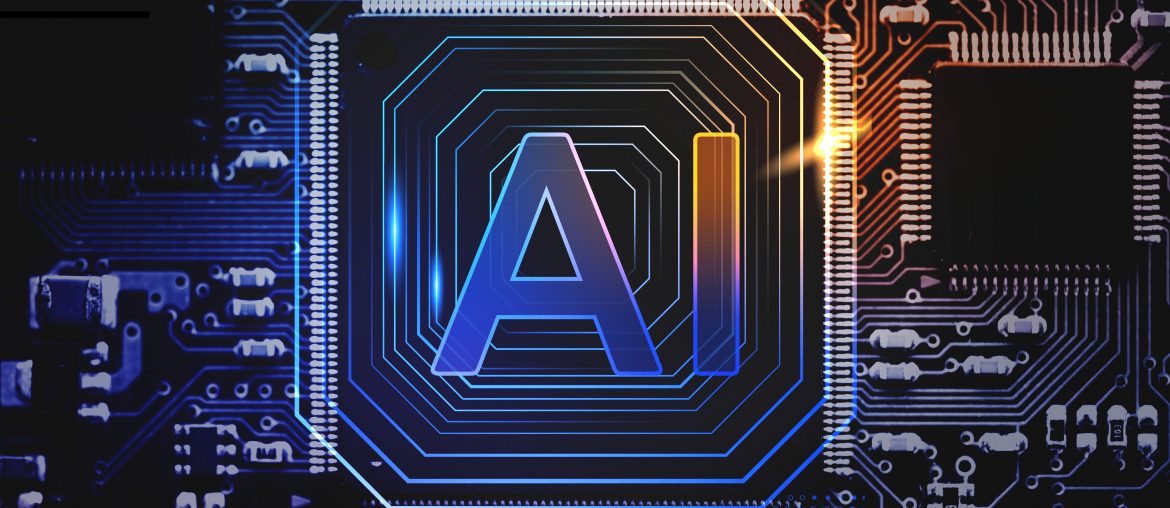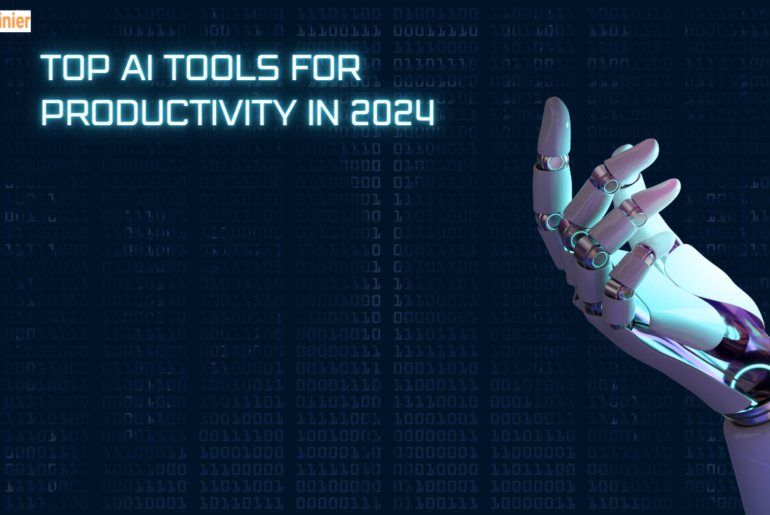What is artificial intelligence (AI)?
Artificial intelligence (AI) is a broad field of computer science that focuses on developing intelligent machines that can accomplish activities that would normally need human intelligence.
Artificial intelligence’s strongest feature is its ability to reason and take actions that are most likely to achieve a certain goal.
Machine learning is a subset of artificial intelligence that relates to the idea of computer programs, learning from and adapting to new data without the need for human intervention.
Deep learning approaches allow for automatic learning by absorbing large volumes of unstructured data including text, photos, and video.
How does artificial intelligence work?
Building an AI system is a delicate process of reversing human features and talents in a machine and then utilizing its computing strength to outperform our abilities.
To properly understand how Artificial Intelligence works, one must first dig into the many sub-domains of AI and comprehend how these domains can be applied to various industries of the industry. You might also enroll in an artificial intelligence course to obtain a thorough understanding of the subject.
- Deep Learning: Deep Learning is a machine learning technique. It trains a machine to classify, understand, and predict outcomes by processing inputs through layers.
- Neural Networks: Human neural cells and neural networks share similar concepts. They’re a set of algorithms that capture the relationship between various underlying factors and analyze the information in the same way that the human brain does.
- Natural Language Processing: NLP, is the science of machine reading, understanding, and interpreting a language. When a machine understands what the user is trying to say, it reacts appropriately.
- Computer Vision: Computer vision algorithms attempt to comprehend a picture by dissecting it and investigating distinct aspects of the object. This aids the machine’s classification and learning from a group of photos, allowing it to make better output decisions based on earlier observations.
- Cognitive Computing: Cognitive computing algorithms try to emulate the human brain activity by analysing text, audio, images, and objects in the same way as humans do, and then attempting to produce the intended result.
The importance of artificial intelligence
Businesses like AI because they can use it to complete simple tasks quickly and without errors. This saves money and allows companies to utilize their resources in other ways.
The success of Uber’s the use of AI has led to a higher level of productivity in businesses. For example, it would have been difficult to conceive if business owners would be able to invest in cab software before.
However, Uber has achieved global success by making use of powerful algorithmic machine learning to analyze user behavior and place drivers on the road before they are needed.
Another example is Google, which is one of the major players in a variety of online services thanks to their AI that analyzes your behavior and enhances its offerings. Google’s CEO, Sundar Pichai said that his company would put artificial intelligence first in 2017.
The biggest and most successful businesses of today have used AI to enhance their operations and outperform competitors.
What is Cloud Computing? Everything You Need to Know
What are the advantages and disadvantages of artificial intelligence?
Artificial intelligence (AI) technologies like deep learning and artificial neural networks are rapidly developing, mostly because the AI can process enormous volumes of data far more quickly and correctly than a human can.
While the enormous amount of data generated every day would drown a human researcher, AI technologies that use machine learning can swiftly transform that data into useful knowledge.
The main drawback of adopting AI as of right now is the cost of processing the enormous volumes of data that AI programming demands.
Advantages
- Good in jobs that need attention to detail;
- Reduced task times for data-intensive tasks;
- Consistently produces results; and
- Virtual agents with AI capabilities are always available.
Disadvantages
- Expensive;
- Strong technical expertise is required;
- Limited availability of skilled workers to create AI tools;
- Only understands what has been presented; and
- The inability to translate knowledge from one task to another.
Mastering Blockchain Basics: A Step-by-Step Guide
What are the 4 different types of artificial intelligence (AI)?
Intelligent systems can be divided into four categories: task-specific, which are widely used today; general intelligent systems, which are not yet advanced enough to reproduce human intelligence; autonomous intelligent systems, which demonstrate a degree of self-governance; and sentient systems, which do not yet exist. These are the categories:
Type 1: Reactive machines. These AI systems are task-specific and lack memory. Deep Blue, the IBM chess software that defeated Garry Kasparov in the 1990s, serves as an illustration. Deep Blue can recognize the pieces on the chessboard and make predictions, but because it lacks memory, it is unable to draw on its past learning to make predictions about the future.
Type 2: Limited memory. Artificial intelligence (AI) is used to build some of the decision-making processes in self-driving automobiles. AI has memories and may use the past to inform the present.
Type 3: Theory of mind. Theory of minds implies that the technology would be socially intelligent enough to recognise emotions and deduce human intentions.
Type 4: Self-awareness. In this category, AI programs are conscious because they have a sense of who they are. Self-aware machines are aware of their own conditions. There is currently no such AI.
What are the applications of AI?
There are many potential applications for artificial intelligence (AI). Some of the most promising applications include:
- Autonomous vehicles:
Autonomous vehicles use AI to navigate and avoid obstacles. It can be used to develop self-driving cars that can navigate and adapt to changing traffic conditions.
- Smart homes:
The development of smart home technologies that can automate actions like shutting off the lights and adjusting the thermostat can benefit from the usage of AI.
- Personal assistants:
AI may be used to create digital personal assistants that can help with tasks like appointment scheduling and email sending.
- Healthcare:
AI can be used to develop applications that can improve patient care and help doctors diagnose diseases.
Exploring AI-Powered Tools in 2024: A Comprehensive Guide
A Brief History of Artificial Intelligence
Artificial intelligence has been around for centuries, with early forms appearing in the form of mechanical robots.
In the 1950s, early work on AI began to take shape in the form of rule-based systems that could solve simple problems. This work led to the development of more sophisticated AI systems in the 1960s and 1970s.
These systems were able to reasoning and learn from experience. In recent years, AI has made great strides, thanks to advances in computing power and data storage. AI is currently used in many fields, such as manufacturing, banking, and healthcare.
A brief history of artificial intelligence is provided below:
- World War Two provided the push for AI development, with the first impartial computer created by Marvin Minsky in 1950 and Alan Turing creating the Turing Test in the same year.
- Throughout the development of artificial intelligence, the year 1952 has a significant impact. The goal of problem-solving development is to mimic how people solve problems. In 1952, Arthur Samuel started a self-learning initiative.
- The IBM company began experimenting with automatic machine translations in 1954.
- In 1956, Herbert Simon and Allen Newell produced the first attempt at logic theorizing.
- In 1959, while working at IBM, Nathaniel Rochester developed a program to demonstrate geometric theorems. Arthur Samuel is the author of the phrase “machine learning.” John McCarthy and Marvin Minsky also suggested the MIT AI project.
- In 1963, McCarthy started Stanford’s artificial intelligence lab.
- A dearth of outputs prevented AI from developing fully between 1966 and 1973. The complexity of computer technology has now made it difficult. DENDRAL from Stanford University exemplifies this particularly well.
- Following that timetable, the researchers concentrated on applications particular to AI.
- The PROLOG programming language was created in 1972.
- In the year 1974, a wave of computer systems began to emerge. They become more accessible and have the capacity to retain more data over time. The best aspect of artificial intelligence’s history is how quickly it developed NLP (Natural Language Processing).
- 1980 was the year of artificial intelligence, according to history. With the expansion of resources and techniques, AI research is progressing. Through the history of artificial intelligence, this timeline marked the beginning of a new era. In 1980, Digital Equipment Corporation produced the first commercial system.
- The Japan Ministry of International Trade and Industry initiated the fifth-generation computer project in 1982.
- In 1983, the US government created a program for strategic computing.
- The landmark in artificial intelligence is the decade of the 2000s.
- Self-driving won DARPA’s major challenge in 2005.
- Google made improvements in speech recognition in 2008.
- Google produced self-driving vehicles in 2014.
See also the complete timeline of artificial intelligence here.
Summary
- Artificial intelligence, also known as AI, is the study of teaching machines to mimic or perform human functions.
- To teach a machine, a scientist can use a variety of techniques. In the early eras of AI, programmers created hard-coded programs that included every conceivable logical scenario and the appropriate response for the machine.
- It gets challenging to manage the rules as a system becomes more complicated. To get over this problem, the computer can use data to teach itself how to handle every circumstance from a certain environment.
- The availability of sufficient data that is highly heterogeneous is the most crucial component of a powerful AI. For instance, if there are enough words available, a machine can learn other languages.
- The newest cutting-edge technology is artificial intelligence. McKinsey estimates that AI can increase every industry by at least a double-digit rate and that venture capitalists invest billions of dollars in startups or AI initiatives.
- Artificial intelligence comes in a variety of forms, including Super AI, General AI, and Rule-based AI.



